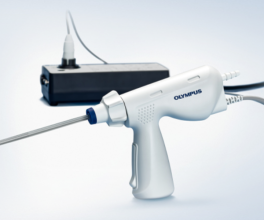
Lung Cancer Screenings: Raising Rates and Awareness
Lung cancer is the second most common cancer among men and women, and the leading cause of cancer death in the United States.1 Yet, studies show an alarmingly low rate of participation among those who are eligible for lung cancer screenings.
Now that guidelines have recently changed to encourage more people to get screened, will doctors see any correlating increase in lung cancer screenings?
Earlier this year, the U.S. Preventive Services Task Force (USPSTF) expanded its guidelines for annual lung cancer screenings using low-dose computed tomography (LDCT).2 The USPSTF now recommends screenings for adults ages 50 to 80 who have a 20 pack-year smoking history and currently smoke or have quit within the past 15 years. The recommendation had previously been 30 pack-years for ages 55 to 80.
A person’s pack-year is determined by the number of packs of cigarettes smoked per day multiplied by the number of years they smoked. For instance, 20 pack-years is equal to one pack a day for 20 years or two packs a day for 10 years.
The screening rate of eligible patients in 2010 was only 3.3%.3 The screening rate saw only a modest increase by 2015 to 3.9% or about 262,700 of the estimated 6.8 million people who are eligible.4 Currently, the national screening rate for those considered at high risk is only 5.7 percent.5
Value of Early Screening
Under the new screening guidelines, about 14 million Americans qualify as high-risk and are recommended for annual LDCT scans. In its 2020 “State of Lung Cancer” report, the American Lung Association estimated that if all qualified individuals had been screened, nearly 48,000 lung-cancer deaths could have been prevented that year.
The American Cancer Society notes that symptoms of lung cancer usually do not appear until the disease is already at an advanced stage, and that detection in its later stages makes the prognosis poor, highlighting the need for catching the disease at an earlier stage through annual screenings. The American Lung Association reports that 47% of lung cancer cases are not caught until later stages when the five-year survival rate is just 6%.6
In 2020, more than 220,000 people were diagnosed with lung cancer and 135,720 died of the disease.7 In 2021, an estimated 235,760 new cases of lung cancer will be diagnosed and about 131,880 deaths are projected, according to the American Cancer Society.
So why are so few people getting screened for lung cancer?
Is lack of awareness of the issue? Barriers to healthcare? Fear of what a screening might find? The stigma attached to smoking? It seems that all these factors may contribute.
In the Midwest, a region with one of the highest smoking rates in the U.S.8, 40% of those surveyed in a recent Olympus poll on lung cancer said they do not believe that an LDCT scan can help reduce the rate of lung cancer deaths.9
About 75% of those polled believe that the stigma around smoking can discourage former smokers or those who still smoke from undergoing lung cancer screenings. And a quarter of participants believe that if you smoke, but not enough to qualify for annual screenings, you’re not at risk for lung cancer.
CT scans and early detection
The American Lung Association and the Ad Council have teamed up on the “Saved by the Scan” campaign aimed at highlighting early detection. A primary focus of the initiative is former smokers, who make up roughly half the high-risk population but may not see themselves as needing preventative screenings.
The technology exists to offer safe, effective, comfortable and quick screenings. Results from the National Lung Screening Trial compared survivor rates among those receiving three low-dose CT scans vs. three chest x-rays. The study found that early detection through low-dose scans reduced the mortality rate for those with lung cancer by up to 20%.10
But false positives are possible, leading to unnecessary tests, overdiagnosis and patient anxiety. To avoid that happening, the American Lung Association recommends annual screenings to establish a baseline that allows doctors to compare scans.
Most private insurance plans and Medicare pay for annual screenings for eligible patients. The American Cancer Society reports that screenings are not necessarily covered by Medicaid in all states and recommends people check with their individual state Medicaid offices to learn about what services are provided for cancer screening tests.
1 The American Cancer Society, Key Statistics for Lung Cancer
2 https://www.uspreventiveservicestaskforce.org/uspstf/recommendation/lung-cancer-screening
3 Jemal A., Fedewa S.A. “Lung cancer screening with low-dose compute tomography in the United States – 2010 to 2015.” JAMA Oncol. 2017; 3: 1278-1281
4 Jemal A., Fedewa S.A. “Lung cancer screening with low-dose compute tomography in the United States – 2010 to 2015.” JAMA Oncol. 2017; 3: 1278-1281
5 American Lung Association, State of the Lung Cancer 2020 Report, Accessed August 2021
6 American Lung Association, State of the Lung Cancer 2020 Report, Accessed August 2021
7 National Cancer Institute
8 Tobacco use by geographic region, Centers for Disease Control and Prevention. Published Nov. 25, 2019.
9 Olympus engaged online survey provider SurveyMonkey to conduct a poll via the SurveyMonkey Audience platform on April 28, 2021, wherein 886 adults participated.
10 National Cancer Institute





